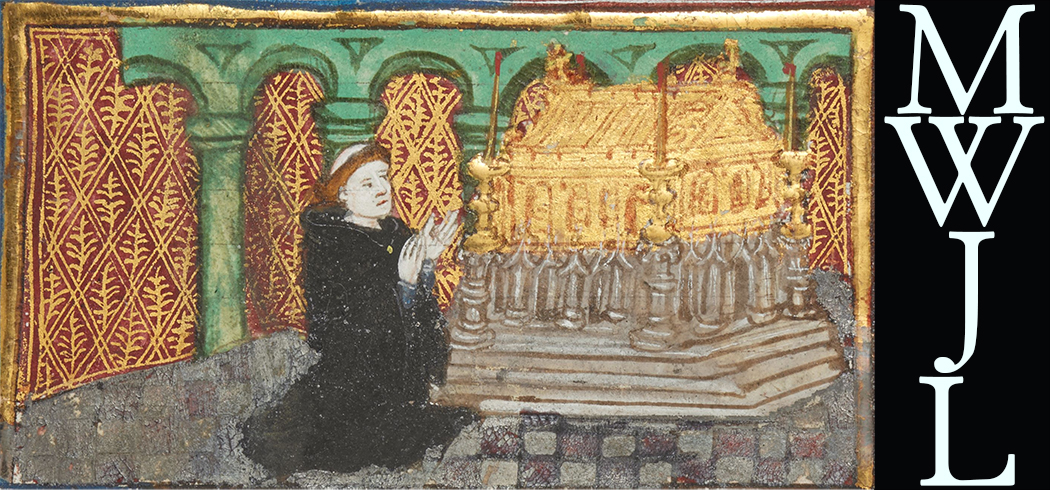 A Mumming at Hertford:
British Library Additional 29729 Verses
A Mumming at Hertford:
British Library Additional 29729 Verses
HomeAbout the ArchiveAbout John LydgateWorksManuscriptsAbout this ManuscriptEditorial ApparatusContactVisualization
Folio 138 Recto
Compare Witnesses: •
ɲ
next in order / thys bocher stoute and bould •that killed hath / bulles and bores olde •
yet durst he neuer with his sturdy wyffe •
in no mater holde champartye •
and yff he did / she wolde anon defye •
and sodenly setten hym at nought •
though his bely were rounded lyche an ocke •
she would not fayle / to gyue the fyrst stroke •
for proude pernelle / lyche a champyon •
wolde leue hir puddinges / in agreat cawdron •
suffer them boylle / and take of them non hede •
but with hir skumer reche hym on the heued •
she would paye hym and make no delaye •
byd hym goo pley hym a twenty deuell weye •
she was no cowarde found at suche a nede •
hir fyst full oft made his chekes bled •
what quarell euer that he agaynst hur sett •
she cast hyr not / to dye in his debte •
she made no talle / but qwytt hym by and by •
his quarter sowde / she payde hym faythfully •
and his wagis with all hur beste entente •
she made ther of no assyne ment •
Notes
-
The scribe appears to have added a superflous "c" glyph here. Trinity R.3.20 has "kracching." ↩
-
Bracketed on each side. ↩
-
This looks, at first glance, like "un" rather than "m' based on the number of possible minims. Comparison with other "p" glyphs in this manuscript, however, show that the scribe consistently begins the p with a mark to the left of the initial descender. Thus, what the scribe is doing is completing the m, then carrying the stroke up to the initial position of the following "p." A similar upstroke after the final minim can be seen in "hym" in the following line. ↩
-
This looks similar to an et, rather than the 'n' the scribe uses throughout, but its position in the manuscript suggests that it's meant to serve the same function. Interestingly, the EETS edition (and Trinity R.3.20 as its exemplar) has "Eeke" whereas this manuscript obviously has "seke." ↩
-
Bracketed on both sides. ↩
-
Bracketed on the left. ↩
-
The EETS edition and Trinity R.3.20 have "haste," which is likely what was intended. Compare with the "st in "cast" at line 20 of the section above. ↩









